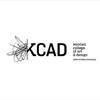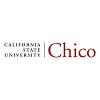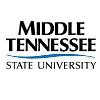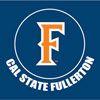
| Ranking | School | % |
|---|---|---|
| 1 | University of California Los Angeles | top 1% |
| 2 | The Ohio State University | top 2% |
| 3 | Texas A&M University | top 3% |
| 4 | University of Central Florida | top 4% |
| 5 | Massachusetts College of Art and Design | top 5% |
| 6 | San Jose State University | top 6% |
| 7 | Bowling Green State University | top 7% |
| 8 | Purdue University | top 8% |
| 9 | Clemson University | top 9% |
| 10 | California State University-Long Beach | top 10% |
| 11 | University of Texas at Dallas | top 15% |
| 12 | Florida State University | top 15% |
| 13 | Edinboro University | top 15% |
| 14 | University of Washington | top 15% |
| 15 | Kendall College of Art and Design | top 20% |
| 16 | California State University | top 20% |
| 17 | California State University-Northridge | top 20% |
| 18 | Ball State University | top 20% |
| 19 | Virginia Commonwealth University | top 20% |
| 20 | University of Wisconsin – Stout | top 25% |
| 21 | University of Colorado - Denver | top 25% |
| 22 | Virginia Polytechnic Institute and State University | top 25% |
| 23 | Ohio University | top 25% |
| 24 | Middle Tennessee State University | top 25% |
| 25 | New Jersey Institute of Technology | top 30% |
| 26 | Louisiana State University | top 30% |
| 27 | University of Illinois at Chicago | top 30% |
| 28 | University of South Florida | top 30% |
| 29 | California State University-Fullerton | top 35% |
| 30 | Sam Houston State University | top 35% |
| 31 | East Tennessee State University | top 35% |
| 32 | Grand Valley State University | top 35 % |
| 33 | New Mexico State University | top 40% |
| 34 | North Carolina State University at Raleigh | top 40% |
| 35 | University of Hawaii at Manoa | top 40% |
| 36 | Dakota State University | top 40% |
| 37 | University of Connecticut | top 40% |
| 38 | The College of New Jersey | top 40% |
| 39 | Evergreen State College | top 45% |
| 40 | University of Massachusetts-Lowell, | top 45% |
Our 2018 list of the Top 40 Public Animation School Programs in the US.
For an explanation of ranking criteria, click here.

Founded in 1919 as the Southern Branch of the University of California, University of California Los Angeles (UCLA) is home to nearly 45,500 students from all 50 states and more than 100 foreign countries. The school offers 125+ undergraduate majors across 109 academic departments, and more than 40 graduate programs including the Animation Workshop of the School of Theater, Film and Television.
Founded in 1948 by Disney animator William Shull, the UCLA Animation Workshop is a three-year MFA program that accepts just 12 new students each year. Before applying to the program, students typically earn a BA in Film and Television or a BFA with a Concentration in Animation at UCLA. The BA program gives future MFA students the opportunity to study all facets of digital media, film, and television, as well as a full year of animation studies, followed by an internship.
Once in the program, students have access to the exclusive Summer Institute Symposium, which provides the opportunity to meet and listen to some of Hollywood’s most accomplished professionals. Past guests have included Simon Kinberg (writer-producer, X-Men: First Class, Mr. & Mrs. Smith), Meg LeFauve (writer, Inside Out), Zak Penn (writer, The Incredible Hulk), Chris Gorak (director, The Darkest Hour), John Hegeman (chief marketing officer, New Regency Productions), and many others.
Graduates of UCLA’s animation programs have landed positions at Pixar and they have worked with directors such as Tim Burton, and on films such as The Simpsons Movie and Monster House.

Established in 1870 as Ohio Agricultural and Mechanical College, The Ohio State University offers over 200 majors, minors and specializations from which more than 66,000 students can choose multiple paths to focus on animation in both the College of Arts and Sciences and the College of Engineering. Paths in animation encourage students to explore courses in 3D modeling, 2D/3D animation, video game production, augmented and virtual reality, digital imaging, digital video, interactive visualization, interactive art, game art and design, Art Games, motion capture, procedural content generation for games, real-time rendering, photogrammetry and more at both the undergraduate and graduate levels. Students in all programs can work on individually defined or team-based projects.
The Department of Art offers BFA and MFA degrees in Art with an emphasis in Art and Technology. It emphasizes the creation of animation, interactive art and experimental forms in the context of art making.
The Department of Design offers an MFA degree in Design focusing on Digital Animation and Interactive Media. This program emphasizes the production of creative research-based projects in the user-centered context of design.
The Department of Computer Science and Engineering (CSE) offers BS, MS and PhD degrees in Computer Science with a specialization in Computer Graphics and Game Design.
Ohio State introduced an interdisciplinary BA program in Moving Image Production in Autumn, 2017.
Students utilize state of the art facilities, equipment, and interdisciplinary expertise in the school’s many special labs, including the world class Advanced Computing Center for the Arts and Design (ACCAD).

Texas A&M University is the state’s first public institution of higher learning. Established in 1876, the school is home to 68,625 students enrolled in nearly 400 degree programs across 16 colleges and schools. The College of Architecture, which broadly defines animation within “Visualization,” offers several programs for aspiring animators. Options include BS, MS, and MFA degrees in Visualization.
Sample courses include Drawing for Visualization, Graphic Design, Color Theory, Visualization Technology, Programming, Visualization Studio, Digital Painting, and Visual and Performing Arts. The interdisciplinary Visualization programs offered in the College of Architecture prepare students to work in animation, technical animation, illustration, and many other areas.

Established in 1963 and home to more than 66,000 students across four campuses, the University of Central Florida (UCF) is the nation’s second-largest university. One of the nation’s youngest universities, UCF offers around 230 degree programs across 13 colleges. The College of Arts and Humanities is home to the School of Visual Arts & Design (SVAD), which offers a number of degree programs for aspiring animators.
Options include a BFA in Art with an Emerging Media Track/Character Animation Specialization and an Emerging Media Track/Experimental Animation Specialization. The Character Animation specialization is designed to prepare students for careers as animators, modelers, riggers, or texture artists in the film or computer game industries.
Programs for graduate students include an MA in Visual Language and Interactive Media, and an MFA in Emerging Media with an Animation and Visual Effects, Entrepreneurial Digital Cinema, or Studio Art and the Computer Track. The MA focuses on the development of advanced skills for digital media professionals, while the MFA is a terminal scholarly and creative degree suitable for students wishing to pursue careers as professors in higher education or as creative leaders in industry.

Massachusetts College of Art and Design (MassArt) was founded in 1873 as a training institution for aspiring drawing teachers, architects, artists, and designers. Today, the school offers more than 20 undergraduate art programs, nearly a dozen graduate programs, and around seven certificate programs to a population of more than 2,000 students. The Animation Department at MassArt offers a BFA in Animation that gives students the opportunity to engage in a variety of conventional and experimental techniques.
Students in the program study Documentary Animation, Digitally Generated Animation, Character Animation, Stop Motion, Experimental Video, and Emerging Technologies. Other highlights include “Squealing Pegs,” which is an annual screening of recent animated short films, the Animation Senior Showcase, and visiting artists and lectures.

San Jose State University (SJSU) was founded in 1857 and it is home to more than 32,000 students enrolled in 145 areas of study, with an additional 108 concentrations, across eight colleges. The College of Humanities and the Arts, Department of Design offers a BFA in Animation/Illustration. Graduates of this program have worked on films from A Bug’s Life and Finding Nemo to Monsters, Inc. and Shrek.
Graduates have also been hired at more than 135 animation studios, game design companies, film studios, and academic institutions. Just a few include 20th Century Fox, Animation Mentor, Blue Sky Studios, Blizzard Entertainment, Cartoon Network, Cogswell Institute, Disney Interactive, Electronic Arts, Lucasfilm Animation, NBCUniversal Studios, Nickelodeon, Pixar, Sony/Columbia, The Art Institute of Las Vegas, Disney Animation, and Zynga.
The Department of Design also offers an MFA in Digital Media Art. The program is offered at the CADRE Institute, which “reflects the innovative atmosphere in Silicon Valley.” Academic programs emphasize artistic experimentation within a context of historical, cultural, and theoretical study. The program is intended for students with interest in contemporary research. CADRE's diverse community of faculty and graduate students produce artworks involving visualization, simulation, hypertextuality, information, mapping, telepresence, networks, and interactive systems.
Technical facilities include a wide range of computing resources. Students work across the boundaries of computer visualization, animation, digital video, multimedia, electronic sculpture, sound and virtual reality. CADRE supports its own networking environment and offers excellent opportunities to produce internet-based artworks.

Founded in 1910, Bowling Green State University (BGSU) is home 19,000 students, including 2,500 at BGSU Firelands in Huron, Ohio. The school offers more than 200 undergraduate majors and programs on the main campus and 22 at BGSU Firelands. The school houses nine colleges, including the College of Arts and Sciences, home of the School of Art. The School houses the BGSU Digital Arts program, which offers a BFA in Digital Arts and a BA in Art with a Digital Arts Specialization. The BA program has three Focus Areas including Computer Animation & Video, Imaging, and Interactive Multimedia.
An MFA in Art with a Major in Digital Arts (Computer Animation, Digital Imaging, and Interactive Media) is also available, as well as a Minor in Digital Art. The MFA program is an intensive, 60-credit studio degree designed to prepare students to become both professional artists in industry and university-level instructors while developing their own studio practice. Students have the opportunity to explore 3D Modeling and Animation, Interactive Multimedia Development, Digital Video, Digital Imaging, and Hybrid Media forms including 3D printing, Architectural Projection Mapping, Web App Development and Interactive Installation Art.
The Digital Arts program offers internship opportunities and study abroad experiences to all students in more than 40 countries worldwide.

Established in 1869, Purdue University is home to more than 41,500 students from all 50 states and nearly 130 countries. Part of Purdue University, Purdue Polytechnic Institute was founded in 1964 as Purdue University College of Technology. Around 12% of Purdue’s students are enrolled in the Polytechnic Institute, which houses eight departments and schools that offer 68 academic options in six subject areas. The Department of Computer Graphics Technology (CGT) offers animation programs at all degree levels.
The BS in CGT with a Major in Animation focuses on six areas of animation including 3-D Modeling, Texturing, Lighting, Rendering, Character Rigging (creating a digital skeleton) and Motion. Graduates of the BS program have found employment at DreamWorks, Walt Disney Company, and Rhythm & Hues and eight of the school’s alumni were part of the creative teams behind 2014 Oscar winner Big Hero 6 and 2014 Golden Globe winner How to Train Your Dragon 2.
The CGT Department also offers a BS in CGT with a Major in Visual Effects Compositing that combines Animation, Visual Effects, and Video to create “highly graphical” videos for episodic television and films. A BS in Effects Technical Direction is also available and it highlights supplemental coursework in Animation. Graduates of the program have also landed positions at DreamWorks, Walt Disney Company, and Rhythm & Hues.
Graduate offerings include an MS in CGT and a PhD in Technology offered through the Department of Computer and Information Technology (CIT). The MS offers several focus areas for aspiring animators including Computer Animation, Video Production and Visual Effects, Computational Art, and Virtual and Augmented Reality. The PhD Program offers a CGT Specialization that covers Animation, Game Studies, Human Centered Design and Development, Virtual Product Integration, and Web Programming and Design. Students may also earn a BS CGT/MS Technology with a Specialization in CGT, which may be completed in just five years instead of six years or more if pursued separately.

Established in 1889 as Clemson Agricultural College, Clemson University is home to nearly 24,400 students enrolled in 80+ majors, 75+ minors, and 110+ graduate degree programs across seven colleges. The College of Engineering, Computing and Applied Sciences, School of Computing offers several programs for aspiring animators including an MFA in Digital Production Arts (MFA DPA), a new MS in DPA, and a Minor in DPA.
The DPA MFA Program is a professional degree program that offers a unique blend of instruction from art, computer science, computer engineering, graphic communications, performing arts, philosophy, and psychology, together with newly designed courses targeted at production techniques specific to the animation, visual effects, and electronic games industries. Sample courses include Computer Animation, 3D Modeling, Compositing, Computer Games, FX, Lighting, Rigging, Simulation, and Visual Effects, to name a few.
The new MS in DPA focuses on the technical components of visual effects production for the film, electronic games, and commercial video industries. Sample courses include 3D Modeling and Animation, Virtual Reality, 2D Game Engine Design, Character Animation, Physically Based Visual Effects, Visual Foundations for Digital Production, Audio Engineering, Improvisation, and Advanced Animation.
DPA program graduates have worked on films such as Frozen, Hobbit, Rio, How to Train Your Dragon, and The Croods. Many have been hired by major studios such as Pixar, Walt Disney Animation Studios, Blue Sky Studios, DreamWorks, EA, ReelFX, and Sony Pictures Imageworks.

California State University Long Beach (CSULB) is one of the 23 campuses of the California State University System. The school was established in 1949 and it is home to 37,430 students enrolled in more than 300 programs across eight colleges. The College of the Arts, School of Art offers a BFA with an Option in Illustration/Animation. Students may choose the Animation or Illustration Track, but they may take courses in both tracks and work with students in both tracks in the digital lab. An MFA/MA degree is also available.
This advanced degree is "designed with a dual emphasis on tailoring programs of study to individual students while fostering shared experience among a community of students.” Also part of the College of the Arts is the Department of Film & Electronic Arts, which offers a BA in Film and Electronic Arts. The program features heavy animation coursework including courses such as 3D Computer Animation, History of Animation, Digital Arts Production (Visual Effects, Computer Animation, Interactive Media), and many others.

The University of Texas-Dallas (UT Dallas) was established as a member of the University of Texas System in 1969. The school is home to more than 27,600 students enrolled in 130 academic programs across seven schools. The School of Arts, Technology, and Emerging Communication (ATEC) offers a variety of interdisciplinary programs for aspiring animators including a BA in Arts, Technology, and Emerging Communication with Animation, (BA ATEC), an MA in Arts and Technology (MA ATEC), an MFA in Arts, Technology, and Emerging Communication (MFA ATEC), and a PhD in Arts, Technology, and Emerging Communication (PhD ATEC).
ATEC students have the opportunity to take a total of 15 credit hours/five courses in Animation, Design, Storytelling, and Games, to name a few. Courses such as Topics in Animation, Topics in ATEC, and Topics in Game Development are also available.

Founded in 1851 and home to 41,900 students, Florida State University (FSU) is one of the largest and oldest of the 11 institutions of higher learning in the State University System of Florida. The school offers more than 275 degree programs across 16 colleges. The College of Motion Picture Arts offers several programs for aspiring animators including a BFA in Motion Picture Arts – Animation and Digital Arts, and The Torchlight Program.
BFA students will begin with Film History, Screenwriting, Directing, Cinematography, CG and Live Action Production, Editing and Sound. Students will then learn the craft of digital filmmaking through 3D Animation, Character Development, Compositing, Modeling, Stop Motion, Texturing, Rendering, and Visual Effects Cinematography. The Torchlight Program gives FSU animation students who would like to freelance or start their own studios the opportunity to learn about “current and emerging business practices of the motion picture industry.” The program offers coursework in key areas such as Distribution, Marketing, and Motion Picture Financing.

Edinboro University was founded in 1857 as the Edinboro Academy. The school is home to 6,550 students enrolled 135 degree programs across five colleges and schools. The College of Arts, Humanities and Social Sciences is home to the Art Department which houses Edinboro’s second largest program by enrollment—the BFA in Applied Media Arts with 15 majors and programs. The Applied Media Arts – Cinema program allows students to focus on Traditional Animation, Computer Animation, or Film and Video.
Graduates of the program have landed careers with Walt Disney Animation, Discovery Channel Pixar, and A&E Network as animators, writers, filmmakers, directors and producers. Names of alumni can be spotted in the credits for such films as Zootopia, Frozen, Night at the Museum, and Star Wars: The Clone Wars.

Established in 1861, University of Washington (UW) is home to more than 56,000 students across three campuses located in Seattle, Bothell, and Tacoma. The school offers more than 570 degree options across 300+ programs and 16 colleges and schools. Programs for aspiring animators are offered through the Paul G. Allen School Computer Science & Engineering and include a BS in Computer Science, a BS in Engineering, and a PhD or Professional Master’s Program (PMP) in Computer Science & Engineering (CSE).
In both degrees, students can work with faculty and graduate students on research; collaborate with industry partners; tackle complex design and implementation projects in capstone courses; and tailor their degree to meet their interests and goals. Sample courses include Computer Animation, Computer Graphics, Advanced Digital Design, Digital Sound, Data Visualization, and Artificial Intelligence.
Students in both programs have access to three main labs at UW CSE. All are engaged in research spanning the areas of animation, computer game science, graphics, vision, and visualization. Labs include the Graphics and Imaging Lab (GRAIL), the Center for Game Science, and the Animation Research Labs. Per UW, The GRAIL group is known for “groundbreaking” research in computational photography, games for science and education, 3-D reconstruction, Internet photo collections, object recognition, human shape and motion analysis, information visualization, and animation. Researchers at the Center for Game Science use gaming to solve grand challenges, crowdsource human problem solving to aid scientific discovery, and improve student interest and achievement in mathematics.
The Animation Research Labs is a multi-disciplinary effort that brings together faculty and students from UW CSE, the Department of Architecture, and the Schools of Art, DXARTS, Drama, and Music. The ARL is focused on advancing the state-of-the-art in animation through teaching, research, and computer-animated production in collaboration with experts from Disney Animation Studios, Bungie, Industrial Light & Magic, Microsoft Game Studios, Pixar, and many others.
In addition to the Computer Science and Engineering Programs, University of Washington offers a BFA with a Major in Digital Arts and Experimental Arts (BFA DXARTS) and a PhD in DXARTS. Students in both programs have the opportunity to focus their work in a particular area of experimental arts (computer animation, digital video, digital media art, computer music and sound art, design computing, mechatronics, and so on). Whatever the chosen area, “artists and scholars working at DXARTS engage in teaching, learning, and research within the synergistic, multidisciplinary setting of the center's labs, studios, and classrooms.”

Kendall College of Art and Design, Ferris State University (KCAD) was founded in 1928. The school serves more than 1,200 students enrolled in around 24 BFA, BS, MA, MFA, and Certificate programs. KCAD offers a BFA in Digital Art and Design that allows students to work in one of two focus areas including Entertainment Art (animation, digital 3D, visual development for games and animation, and sequential arts like comics and storyboards) and Multimedia Design (interaction design for the web, apps, virtual reality, the internet of things, and video and motion design animation).
Students in the program will gain knowledge and hands-on experience via high-end equipment and on-campus facilities such as Cintiq Studios and a wide range of cameras, microphones, and lighting equipment, and via access to The Dow Center FlexLab, and KCAD Library. Graduates will leave the program with the skills and experience needed to pursue career paths in areas such as 2D animation, 3D game art, visual development, interaction design, and motion design.

Founded in 1887, California State University, Chico serves nearly 17,800 students enrolled in over 300 undergraduate and graduate academic programs across seven colleges, five schools, and 29 centers and institutes. The school offers several programs for aspiring animators. The College of Humanities & Fine Arts (HFA), School of the Arts (SOA) offers an Electronic Arts BFA: Computer Animation. The College of Engineering, Computer Science, and Construction Management offers a BS in Computer Animation and Game Development (BS CAGD) and a Minor in Applied Computer Graphics.
Sample courses for the degree programs include Digital Modeling, 2D Design, 3D Design, Digital Animation, Animation Production, Motion Capture, 3D Character Animation, Computer Animation, Advanced Production, and Digital Lighting and Texturing. The Minor allows students to select three units from any CAGD courses and nine units from upper-division CAGD courses. Required courses for the program include Computer-Assisted Art, Digital Photography, and Concept Design and Storyboarding.

Founded in 1958, California State University Northridge (CSUN) serves more than 40,000 students enrolled in more than 140 programs. The school consists of nine colleges, including the Mike Curb College of Arts, Media, and Communication, which houses the Department of Art. Several programs are available through the Department and include a BA Visual Arts with three Animation Tracks: 2D Animation Design, 3D Animation, and Game Design, and MA and MFA degrees in Visual Arts with a Concentration in Video/Digital Art.
Curb College Department of Art students have the opportunity to participate in industry and studio events, organized studio tours, and ongoing collaborative educational partnering with DreamWorks studios and Seoul Institute of the Arts. Students also participate in industry events and internships with Nickelodeon, Disney, Film Roman, Warner Bros., and others. Students in all programs have access to two award-winning student run animation clubs—the Animation Students League of Northridge and the Game Development Club.

Established in 1918, Ball State University enrolls around 22,000 students from every state, two U.S. territories, about 55 countries, and every Indiana county. The school has more than 300 programs across 10 colleges. The College of Fine Art, School of Art offers several programs for aspiring animators. Offerings include BFA in Studio Art with an Emphasis in Animation and an MFA in Animation.
The BFA program explores 3D animation, stop-motion, and traditional 2D animation. Sample courses include Character Design, Drawing for Animation, Animation Production, 3D Modeling and Rendering, Animation Specialty, Character Design, 3D Animation, and Storyboarding. The program prepares students to work in Film and Television, Video Games, Advertising, Product Visualization, Medical Animation, and Architectural Rendering.
The MFA in Animation focuses on traditional and modern animation techniques, storytelling, and film production through the creation of a short film as the thesis project. Sample courses include Advanced Animation, Animation Studio, and Teaching Studio Art. Students will gain comprehensive knowledge of animated films from their conception to realization, learn about the history of animation while considering critical artistic issues, and acquire in-depth knowledge of animation software, and the elements of digital media.

Virginia Commonwealth University (VCU) was established in 1838. The school serves just over 31,000 students enrolled in 225 academic programs across 13 schools and one college. The School of the Arts, Department of Kinetic Imaging offers BFA and MFA degrees in Kinetic Imaging. The program is dedicated to Animation Art, Emerging Media, Sound and Video.
The BFA program has 100 to 110 students, and accepts just 28 to 35 new incoming sophomores each year. Students in the program will take courses such as Principles of Experimental Animation, 3D Computer Graphics and Animation, Theory and Production of Media-Based Sound, and Video Editing Techniques.
The MFA in Fine Arts/Kinetic Imaging expands the field of video art, experimental animation, sound art and emerging media through the production of works of art that explore the artist’s relationship to culture and society. Potential works include media projects that take such forms as the poem, the essay, the video sculpture, and the installation. The two-year curriculum for this studio-based fine art program consists of 60 academic credits. The program is designed to support 4-8 graduate students.

Established in 1891 as The Stout Manual Training School, University of Wisconsin – Stout (UW-Stout) is a Polytechnic University that serves more than 9,500 students from the U.S. and 47 countries. The school offers 45+ undergraduate majors and 20+ graduate programs across three colleges and six schools. The School of Art And Design offers a BFA in Entertainment Design with Concentrations in Animation, Comics and Sequential Art, and Digital Cinema.
Sample courses for the BFA program include Animation Studio, 3D Modeling and Animation, 3D Game Art and Engines, Digital Cinema Studio, Typography in Motion, Comics and Sequential Art, Video Production, and Graphic Design. The program prepares students to enter the industry immediately or to enroll in a MFA program. The School of Art and Design’s MFA in Design is a cross-disciplinary program that consists of study in the areas of Entertainment Design, Studio Art, Game Design, Interactive Media, Graphic Design, and more. Courses for the program are delivered through a variety of methods including on-site courses, online, evening, weekend and intensive summer courses. Graduates of the program will be prepared to pursue roles in the academic community and as design professionals and leaders.

Established in 1912, the University of Colorado Denver (UC Denver) serves around 15,000 students enrolled in more than 115 programs across 13 colleges and schools. The College of Arts & Media is home to the Department of Visual Arts (VA) and the Digital Animation Center (DAC), which offer a BFA in Visual Arts with an Emphasis in 3D Graphics and Animation.
Each year between 28 and 34 students are selected for the program, which consists of courses such as Character Creation, Environment Production, Surface Modeling, VFX Rigging and Animation, and Digital 3D Methods: Motion Graphics for Animators. Students are required to take at least twelve semester hours of Visual Arts electives, to fine tune the emphasis.
To date, DAC student senior short films have been seen in over 230 national and international film festivals in 22 countries. The school says its student films have been seen by hundreds of thousands across the globe, winning more than 50 Best Animated Short awards in non-student categories.

Virginia Polytechnic Institute and State University (Virginia Tech) welcomed its first class in 1872 under the name Virginia Agricultural and Mechanical College. Today, the school is home to approximately 32,304 students enrolled in about 280 undergraduate and graduate degree programs across nine colleges and a graduate school. The College of Architecture and Urban Studies houses the School of Visual Arts (SOVA), which offers several programs for aspiring animators.
Options include a BFA in Studio Art with heavy coursework in 3D Animation and Modeling, Digital Video and Visual Effects, and Digital Painting. Sample course titles include 3D Computer Animation, Computer Animation Studio, New Media Art, Drawing, and Digital Photography.
SOVA also offers an MFA in Creative Technologies that allows students to design a specific program of study that fits their individual interests. Students have the opportunity to develop original work in motion graphics, digital imaging, 3D animation, interactive multi-media design, video, installation, creative coding, spatial interactivity, web design, and sound and imaging.

Ohio University was established in 1804 as Ohio’s first university. The school serves 38,651 students enrolled in more than 300 programs across 11 colleges. The E.W. Scripps College of Communications houses the School of Media Arts. Home to nearly 700 undergraduates, the School offers a BS in Communication with an Emphasis in Games & Animation.
The program encourages students to explore the production of computer animation and digital games, while also providing an understanding of the management and leadership roles in these industries. Sample courses include Modeling & Animation, Narrative Animation, Visual Storytelling, Screenwriting, Compositing, Motion Graphics, Video Game Design, Video Production, Game Development, Media Content Management, Sound for Moving Images, and Media Arts Management (FILM), to name a few.

Middle Tennessee State University (MTSU) opened on September 11, 1911 as one of three state normal schools for teacher training. Today, the school is home to 22,442 students enrolled in more than 115 programs across seven colleges. The College of Media and Entertainment, Department of Electronic Media Communication, offers a BS in Animation and Mass Communication with Concentrations in Electronic Media Communication, New Media Communication, and Photography.
The Electronic Media Communication Concentration offers two specialties: Electronic Media Production (video and film production) and Electronic Media Management (media management). Animation and Entertainment Technology Minors are also available as well as an MS in Media and Communication. Students in the MS program may choose six hours of approved electives in Animation.
The Animation Programs at MTSU prepare students for careers in Character Animation, Motion Graphics, and Visual Effects. Electronic Media Production students are also prepared to create Animated and Feature Films, as well as content for Documentary Films, Television, and Educational Videos.

New Jersey Institute of Technology (NJIT) was founded in 1881. The school opened its doors as The Newark Technical School on Monday, February 9, 1885, with just 88 students. Today, NJIT serves 11,400 students enrolled in 50 bachelors, 59 masters and 19 doctoral degree programs across eight colleges and schools. The College of Architecture and Design houses the School of Art + Design, which offers a BA in Digital Design with two Tracks: Entertainment and Production.
Sample courses for the program include Digital Design Studio, 2D Character Design, 3D Character Development, Acting for Animators, Simulated Environments, Imaginary Worlds, Game Architecture and Design, Digital Sound and Music, Design Techniques, Color and Composition, and Game Modification.
Graduates of NJIT’s Digital Design Program have landed positions in the areas of animation, game design, graphic design, architectural and environment visualization, web design, storyboard art, and more. Among the studios where NJIT students have interned or worked full-time are 1st Avenue Machine, CSALAS & Co Labs, KWD – Kim Wendell Design LLC, Miskowski Design LLC, NTropic, SUSPECT vfx+design, SWDTech Games, and Tripwire Interactive.

Louisiana State University (LSU) welcomed its first class on January 2, 1860. The school offers 200 programs across 11 colleges and schools to 29,292 students (Spring 2017). The College of Art + Design, School of Art offers several multidisciplinary programs for aspiring animators including a BFA in Studio Art with a Concentration in Digital Art and an MFA in Digital Art. The programs allow students to refine their skills in classes that provide a broad, integrated understanding of creative practice across 3D modeling, animation, video, web, interactive systems, photo-based media, and digital printmaking.
Students may also choose to pursue the interdisciplinary Master in Digital Media Arts & Engineering (DMAE) or the 21-credit-hour Minor in DMAE, a collaborative endeavor with seven campus units at LSU.
With around 500 students, the Digital Art Program provides access to the Arts, Visualization, Advanced Technologies and Research (AVATAR) Initiative and The Digital Art and Design Association (DADA). Both provide support to Digital Art students as they pursue “opportunities throughout the university and the broader community.”

University of Illinois at Chicago (UIC) was formed in 1982 “by the consolidation of two U. of I. campuses: the Medical Center campus, which dates back to the 19th century and the comprehensive Chicago Circle campus which replaced, in 1965, the two-year undergraduate Navy Pier campus that opened in 1946 to educate returning veterans.” Today, with more than 35,500 students enrolled in 250 degree programs and 53 certificate programs across 15 colleges, UIC is the largest university in the Chicago area.
The College of Architecture, Design, and the Arts (CADA) houses the School of Art & Art History, which offers BFA and MFA degrees in New Media Arts and Moving Image, and a dual MS in Computer Science/MFA in New Media. An Art Minor is also available and all programs feature animation coursework. Sample courses include Computer Animation, Film, Computer Graphics, Virtual Reality, 3D Space: Modeling, New Media Arts, Motion Graphics, 3D Space: Animation, Drawing, Interactive 3D, and Human-Computer Interaction.
The College of Applied Health Sciences, Department of Biomedical and Health Information Sciences (BHIS) offer another option for students that might be interested in a career that fuses science, medicine, and animation. The MS in Biomedical Visualization (BVIS) offers animation electives such as Interactive 3D, Modeling, Animation I &II, Illustration Techniques, Medical Legal Visualization, and Graphic Design.
The BVIS is the largest and second oldest of four accredited programs of its kind in North America. Graduates of the BVIS program become highly skilled science visualization specialists in medical illustration, animation, interactive media, gaming, haptics, and virtual and augmented reality, working on the frontiers of discovery.

The University of South Florida (USF) is part of three-school USF System including USF, USF St. Petersburg, and USF Sarasota-Manatee. Established in 1956, the school serves more than 50,000 students enrolled in 180 undergraduate majors and concentrations, and dozens of graduate programs, across 14 colleges. The College of the Arts, School of Art & Art History offers several programs for aspiring animators. Options include BA and BFA degrees in Studio Art with a Focus in Video, Animation, and Digital Arts.
The Animation program offers a unique opportunity for artists to pursue a “cutting edge” approach to Video, 2D and 3D Animation, 3D Modeling, Sound, and Digital Media. This comprehensive digital arts program offers students the ability to both develop an expertise in specific digital tools and allows students the flexibility to combine classes to hone a student’s individual artistic voice.
Another option for aspiring animators is the MFA in Studio Art. This graduate degree is an idea-centered program encouraging broad media exploration, interdisciplinary projects, and engagement with current theoretical and cultural issues. Students may choose any medium or discipline.

California State University Fullerton (Cal State Fullerton) serves 39,343 students enrolled in more 109 undergraduate, graduate, and doctorate programs. Established in 1957, the school consists of eight colleges, including the College of the Arts (Department of Visual Arts), which offers more than a dozen graduate and undergraduate programs for artists. Programs for aspiring animators include a BFA in Art with a Concentration in Entertainment Art/Animation.
Through a partnership with Nickelodeon Studios, the Entertainment Art/Animation area has “developed educational opportunities to further the career goals of its students.” In addition to Nickelodeon, graduates of the program have landed positions at Lucasfilm, Sony Games, Sony Pictures Imageworks, Cartoon Network, Disney Feature Animation, Disney TV Animation, and Electronic Arts, to name a few. Students have also worked on productions such as Superman Returns, Avatar, Spiderman 3, SpongeBob Squarepants, Alvin and The Chipmunks, Ice Age 2, and The Simpsons.

Established in 1879 as Sam Houston Normal Institute or School, Sam Houston State University (SHSU) serves more than 20,000 students, making it the twelfth largest university in Texas. The school offers more than 80 bachelor's degree programs, more than 50 master’s degree programs, and six doctoral programs across seven colleges and schools. The College of Fine Arts and Mass Communication is home to the Department of Art, which offers a BFA in Computer Animation. One of the most popular programs in the Department of Art, the Computer Animation program offers a highly collaborative experience in 2D and 3D animated storytelling to a diverse student body.
Students in the program take courses such as 2D Animation, 3D Computer Animation, Character Animation, 3D Animation for Interactive Games, 3D Modeling, the History of Animation, and Pre-Visualization. In addition, all art majors will spend a semester in the W.A.S.H. (Workshop in Art Studio and History) program, which emphasizes contemporary and collaborative art practices. Graduates of the program are prepared to pursue careers in animation and film, game production, fine art, video production, and advertising.

Founded in 1911 as East Tennessee State Normal School, East Tennessee State University (ETSU) serves 14,606 undergraduate, graduate and professional students. The school offers more than 350 programs across 11 colleges and schools. Part of the College of Business and Technology, the Department of Engineering Technology, Surveying, and Digital Media offers a BS in Digital Media (BS DIGM) with a Concentration in Digital Animation, a DIGM Minor, and an MA in New Media Studio.
Through heavy coursework and training in all areas of animation, the BS DIGM Program prepares students for careers 3D Animation, 2D Animation, Motion Graphics, Character Animation, and Technical Direction. Sample courses include Visual Effects and Motion Graphics, 3D Animation, Character Animation, Effects Animation, High Fidelity Modeling for Entertainment, Lighting and Rendering, and Visual Effects Compositing.
The MA Program covers 3D Animation, Gaming, Motion Capture, Visualization, Video and Special Effects, Digital Illustration, and Graphic Design. The DIGM Minor offers courses such as Animation Fundamentals, 3D Animation, Fundamentals of Character Animation, Effects Animation and Lab, 3D Model Design, Motion Tools, and Interactive Development.
Graduates of ETSU Animation Programs are prepared for careers 3D animation, 2D animation, motion graphics, character animation, technical direction, and many others.

Established in 1960, Grand Valley State University serves more than 25,000 students from the U.S. and 84 different countries. The school offers 130 degrees across eight colleges. The College of Liberal Arts and Sciences is home to the School of Communications. Housed within the School of Communications is the Department of Visual & Media Arts, which offers a BA or BS in Film and Video Production.
Students can expect high-impact learning opportunities outside the classroom through internships and local production projects, opportunities to present work through regularly scheduled public screenings, and a peer-reviewed academic journal, and hands-on experience by producing projects for real clients in and outside of the classroom. Courses of study include Animation, Documentary, Fiction, Film Studies, New Media, Nonfiction, Scriptwriting, and Sound Design.

New Mexico State University (NMSU) was established in 1888 as Las Cruces College. The school, which offers 276 programs across seven colleges and a graduate school, serves more than 15,000 students from 49 states and 89 foreign countries across at five campuses, a satellite learning center in Albuquerque, cooperative extension offices located in each of New Mexico's 33 counties, and 12 agriculture research and science center.
NMSU houses eight colleges and schools, including the College of Arts and Sciences. The College is home the Creative Media Institute for Film and Digital Arts (CMI), which offers a Bachelor of Creative Media in Animation & Visual Effects (BCM-ANVE) and a Minor in Animation & Visual Effects. The BCM program is a cross-disciplinary program that prepares students for the 21st century in Digital Filmmaking and Animation & Visual Effects.
While students may choose an area of emphasis, they study all aspects of Digital Filmmaking and Digital Arts, whether they are aspiring writers, directors, cinematographers, or animators. Sample courses include Drawing for Animation, 2D Animation, Rigging for 3D Animation, Modeling, Screenwriting, Visual Effects, Writing for Animation, Character Design and Development, Sets and Environments, Acting and Directing for Voiceover, and Short 2D Animation Production.
Students in both programs have access to a state of the art digital projection screening room, post-production lab, animation lab, and production space.

North Carolina State University (NC State) was established in 1887 and it serves 35,755 students enrolled in more than 300 degree programs across 12 colleges and 65 academic departments. The College of Design, Department of Art + Design, offers several programs for aspiring animators. Programs include a Bachelor of Art + Design: Animation + Interactive Media, a Masters of Art + Design: Experimental Media Arts with an Animation and Digital Storytelling Area. A Minor in Art + Design is also available.
Animation students will take studios that introduce them to Principles of Storytelling, Animation, and Character Design through Sequential Imaging, Introduction to Animation, and Digital Modeling. Graduates of the programs are prepared to work on short and full-length animated films, in character development for animated films, games, and digital storybooks, and on interactive and experimental projects.

University of Hawaii at Manoa (UH Manoa) was founded in 1907 as a land-grant college of agriculture and mechanic arts. The college became the University of Hawaii in 1920 with the addition of a College of Arts and Sciences. Today, University of Hawaii at Manoa is the largest (and oldest) of the 10 UH campuses, serving 17,612 students enrolled in 244 undergraduate, graduate and professional degree programs, across nine degree-granting colleges nine degree-granting schools.
The College of Arts and Sciences houses the Academy for Creative Media (ACM Manoa). Established in 2004, ACM Manoa offers a BA in Creative Media with three Tracks: Computer Animation, Digital Cinema, and Critical Studies. Students in the program learn creative self-expression through the creation of original narratives that are produced for the screen. They gain appreciation for differing forms of creative expression through digital media – documentaries, personal and social story films, animation, and non-linear storytelling through interactive video games.
In addition to animation coursework, ACM students are required to take an introductory course, a basic production skills course, one writing course, and three courses in critical studies.

Dakota State University (DSU) was established in 1881 as a school for teacher education in the Dakota Territory. Today, DSU serves 3,307 students enrolled in more than 35 majors and over a dozen graduate degrees and certificates across four colleges including the College of Arts and Sciences, the College of Business and Information Systems, Beacom College of Computer and Cyber Sciences, and the College of Education.
The College of Arts and Sciences offers a BS in Digital Arts and Design with a Focus in Production Animation and a IS Management: Multimedia Certificate. Students in the BS program will work with current software and video production equipment on projects that mimic real-life experiences. They will learn how to create and edit 2D and 3D characters in a digital environment, as well as digital editing and storyboarding. In the end, graduates will have the experience to work with animated digital videos at a professional level. Possible job titles include Animator, 3D Graphic Designer, Broadcast Design Artist, and TV/Film Effects Artist.
Students entering the Multimedia Certificate program will already have a solid understanding of animation, digital design, and audio production. Students will work with digital software and equipment in four courses that will help them create 2D and 3D graphics, animation, and digital audio recordings. Those who complete the program will leave with a digital portfolio and demo reels. These individuals will be prepared to transfer into a bachelor’s degree program or seek a position in animation, graphic design or broadcast/multimedia.

Established in 1881 as Storrs Agricultural School, the University of Connecticut (UConn) opened with just three faculty members and 13 male students. Today, the school is home to more than 32,000 students enrolled in seven undergraduate degrees in 113 majors, 17 graduate degrees in 90 research and professional practice fields of study, and six professional degree programs (JD, LLM, MD, DMD, PharmD, SJD). Programs are offered across one main campus, five regional campuses and 14 colleges and schools.
The School of Fine Arts offers several programs for aspiring animators including BA and BFA programs in Digital Media and Design with Concentrations in 2D Animation & Motion Graphics, and 3D Animation & Visualization. MA and MFA degrees in Digital Media and Design are also on the available. Creative areas include Digital Arts, Entertainment, Digital Humanities/Social Sciences, STEM, and Business.
Also available is a Certificate in Digital Media and Design This 12-credit, online program will help students develop proficiency with the concepts and tools for business, web design, motion graphics, animation, and video games, among others. All Digital Media and Design programs are available at the Storrs and Stamford campuses.

The College of New Jersey (TCNJ) was established in 1855 as the New Jersey State Normal School. The school serves approximately 7,400 students, including 6,790 undergraduates and 610 graduate students, enrolled in 50 Liberal Arts and Professional programs across seven schools. The School of the Arts and Communication houses the Interactive Multimedia Department, which offers a BA in Interactive Multimedia (IMM). This interdisciplinary program combines Digital Media (digital imaging; animation, motion graphics and digital video; digital audio and electronic music, web design), Interactive Computing (experience design, interaction design, interface design, and programming for everything from web sites to video games), and Professional Writing (interactive storytelling, stories and scripts for movies, animations and video games, technical writing, proposal writing, and online journalism).
IMM students have completed internships at Amazon, MTV Networks, DreamWorks, and NFL Films, and many graduates have found positons at major companies and studios such as Nickelodeon, TIME, and MakerBot. Graduates have also entered graduate programs at top art and design schools such as the School of Visual Arts (SVA), New York University (NYU), and Savannah College of Art and Design (SCAD).

Evergreen State College was established in 1967. The school serves 3,907 students enrolled in more than 60 undergraduate fields of study and three graduate programs. Evergreen State College focuses on interdisciplinary teaching and learning, so the animation curriculum is taught in interdisciplinary programs in conjunction with dance, music, performance, religious and ritual studies, visual art, math, physics, literature, social studies, history and natural history.
Depending on faculty placement, the program is also taught with film, video, and media history and theory in the foundation program—Mediaworks/Non-Fiction Media. Students in the program have access to the Electronic Media (EM) Department, which supports the schools Animation Labs, Film Editing, Multimedia Lab (MML), Music Technology Labs, and the Center for Creative and Applied Media. The undergraduate programs at Evergreen State College lead to a BA, BS, or BAS (Bachelor of Arts & Science) degree.

University of Massachusetts-Lowell (UMass Lowell) was founded in 1894 as Lowell Normal School, a teaching college. The school serves more than 17,000 students enrolled in over 170 programs leading to a bachelor’s master’s or doctoral degree, across six colleges and an Honors College. The College of Fine Arts, Humanities and Social Sciences houses the Department of Art & Design, which offers a BFA in Art with an Animation & Interactive Media Concentration.
Sample courses for the program include 2D Animation, Artbotics, Digital Foundations, Sonic Arts, 3D Modeling & Animation, Post-Digital Aesthetics, Compositing & Motion Graphics, Interactive Media, Character Layout and Design, Visual Motion Effects, Screenwriting, Art & Design of Data Visualization Storyboarding.
In addition to the Art Major, the Department of Art & Design has four Art Minors. Options include Studio Art, Art, Graphic Design, and Art History. The Studio Art (SA) Minor is the top choice for animators. The program is designed for students who focus on photo, animation, design or general art studies.
Graduates of the Animation Programs at UMass Lowell re prepared to enter their chosen art discipline at a professional level. A high percentage of art graduates have obtained excellent positions in their field.

